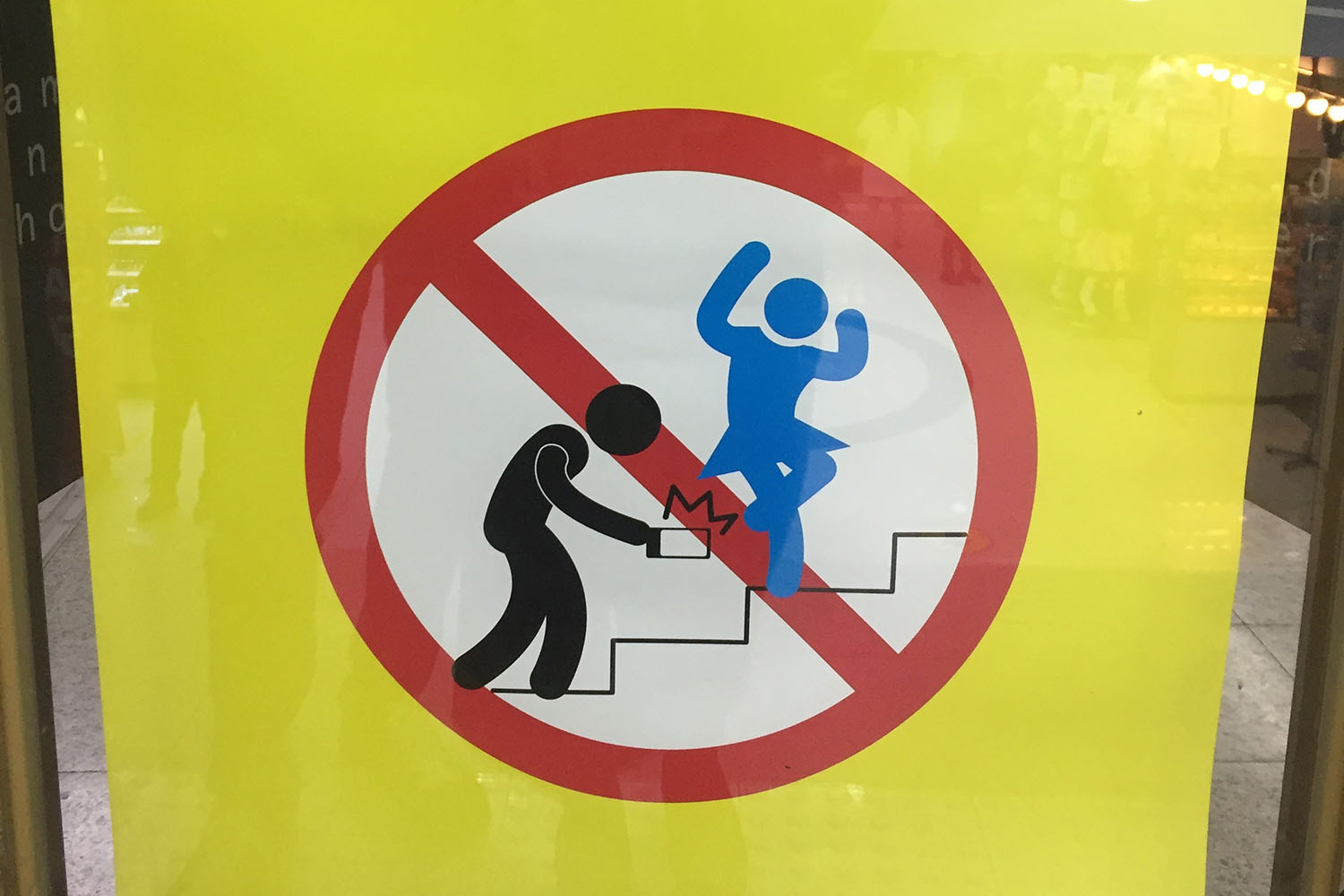
Safety Not Guaranteed: A Woman's Experience on The Seoul Subway
Editor’s Note:
Last week, we published an open letter from a university professor with her permission. In it, she detailed her experience of being sexually harassed as a “white female foreigner” in a public space. The ensuing debates from our readers were contentious, often empathetic, and illuminating.
Sexual harassment in public spaces, and feeling the threat of it, are uncomfortable topics to discuss. But they’re worth discussing, because the conversations invite us to revisit the spaces most of us walk through without much thought. We’re invited to imagine how those public spaces can be experienced differently, in the shoes of those with different appearances.
* * *
As an Asian-Canadian, I am not the most obvious foreigner in Seoul. Like most people in this region of the world, I have brown eyes, black hair and skin with yellow-ish undertones.
When I’m walking around the city, South Koreans will stop me and ask for directions in Korean. “Excuse me, student, is this the way to Mizi Women’s Child-birthing Hospital?” Halmeonis (“grandmothers” in Korean) will ask.
I think this ability to camouflage makes me an opposite of “Charisma Man” (a series of comics whose titular character enjoys a privileged life as a White foreigner in East Asia): I am a foreigner who is not often perceived as different. As “not-Charisma Woman,” my secret power is that I get to catch glimpses of what it’s like to walk in the shoes of regular Jane Kims. However, such insights can sometimes be disillusioning, if not downright disturbing.
For instance, last Sunday I experienced yet again what it is like to be followed and harassed on the subway in Seoul.
It was 8:10 p.m. in the evening; it was cold out and I was heavily bundled up on my way to meet a friend for dinner. I walked into the almost-empty station and onto the equally quiet platform.
A man sitting on a nearby bench stood up and walked towards me. Round-faced and slightly overweight, he looked like a typical salaryman in his late 30s to 40s. He wore black brogues, black trousers, a thick khaki coat and an immaculately white knit circle scarf.
I glanced up and saw his face behind me, above my reflection in the glass sliding doors. It was startling: His eyes were fixed on me with an almost angry expression as he approached. We were the only two people in that section of the platform.
The man shuffled in until his body was practically up against mine. I could feel his breath against the top of my head. What the hell. Was he smelling my hair? Was he trying to rub against my butt? I moved away and turned to stare at him.
He saw that I was aware of what he was doing, so he moved, as if to walk away. After a minute or two, he circled around and began walking back. The subway alert sounded. The next train was arriving. Suddenly, he came back and stood close behind me.
At the last minute, I ran off to another empty car entrance just as the doors opened, hoping to lose the strange man.
I looked behind and saw that my bizarre companion had followed me through the same entrance.
I sat down in a corner seat beside the entrance. Almost all the seats in the car were empty. Despite this, the man seated himself beside me, turned his face towards me and leaned in close.
I immediately got up and moved to the corner seat across from where I’d sat. Then, I took out my phone and snapped a photo to document the creepiness at hand. He was still staring at me, and finally looked away when he realised his photo was being taken.

Unfortunately, my movements only made him more aggressive. The man got up and paced back and forth, until he finally stopped in front of my feet and looked down at me menacingly.
The train stopped, doors opened for the next stop and he suddenly turned and dashed off the train.
Regardless of how nonchalant I tried to be, the situation was terrifying because I had no idea what he was going to do. (This also wasn’t my first time in this kind of situation. Last summer, a man tried to follow me home from the subway). I was confused as to why he felt so entitled to express his anger towards a random stranger.
* * *
Around stations, I’ve seen posters near stairways advising men not to sexually harass women — complete with illustrations of male stick figures taking upskirt photos of female stick figures. On trains, there are also cartoons in Korean with frazzled-looking women, asking men not to grope female passengers.

On a list of cities with the most dangerous public transport systems for women, Seoul ranked 12th in the world, above New York City and Tokyo, according to the World Economic Forum.
It’s surprising, because the city also offers some of the cleanest, well-lit and efficient transport systems in the world. On the buses and subways, people wait on sidelines for others to get off before entering the car, and designated seats are left empty, in case the elderly, pregnant women or people with disabilities need to use them.
I appreciate how safe Seoul generally is. People leave phones, wallets, laptops and other belongings in coffee shops, on picnic blankets and other public areas, walk away for half an hour, and return with everything still there.
But high levels of public security does not translate to safe public spaces for women.
Since last May’s Gangnam murder, Nexon’s firing of an actress who wore a t-shirt with a Megalia slogan, and recent sentiments of misogyny towards Park Geun-hye and other women at anti-government protests, more dialogues surrounding the issues of misogyny, women’s rights and safety have begun to take place in South Korean society.
Local feminist groups, as well as the media, have also been instrumental in raising awareness about the problem of sexual harassment. And South Korean women are also talking online, tweeting about similar experiences.
https://twitter.com/agnesju/status/64218586608189440
“There’s a weird guy on the Line 2 train towards Seongsoo. He was sniffing the hair of a woman who got off at Shillim Station. He keeps on walking behind women, sticking his nose at their heads and sniffing [their hair]. I didn’t notice at first, but he keeps on moving seats and doing the same thing [to different women], then getting off the train. Women beware.”
“It nearly drove me crazy when a guy stalked me on the subway for nearly a week on my way to school. I know too well how you feel. He would stare at me like crazy, at a hand’s distance. I thought I would go mad. He would follow me into the next car if I moved away. I was so scared. I can’t even report something like this.”
These are all steps in the right direction. But ultimately, for South Korea to become a safer place for all women, much more public discourse will need to take place in order to shed light upon the realities of life as a woman in South Korea.
* * *
Tips for women:
Last year, the Seoul government launched an app to prevent sexual harassment on the subways. Titled “지하철안전지킴이” (the Subway Safekeeper), the app, which allows users to report harassment directly to the Seoul Metro, can be downloaded for iOS and Android. But it is available only in Korean.
International anti-harassment website Hollaback!, which fights to end harassment in public spaces, launched a Korean-language chapter a few years ago. Here, women can share their stories about street harassment.

